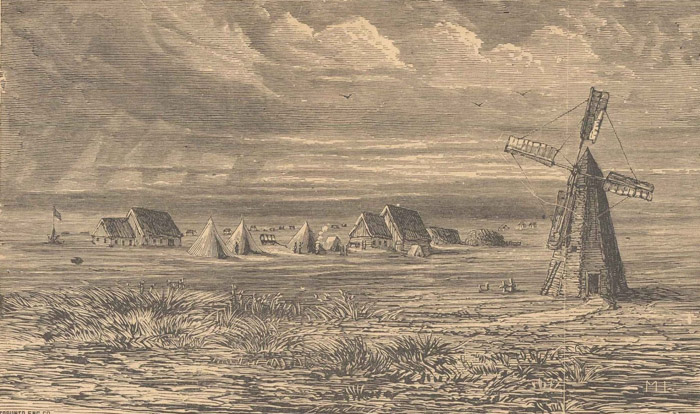For those versed in the history of the East Reserve, mentioning New Bothwell along with early Mennonite settlements will raise some eyebrows, as the town wasn’t established until after the building of the public school in the 1920s. The region surrounding New Bothwell, however, was a vibrant and active area in the early Mennonite settlement. Just west of the current townsite stood the village of Kronsthal (often translated as “Crown Valley”), a village of 21 residents in 1876 which operated as a sort of gateway to the East Reserve along the Winnipeg road (Winnepechscha Wach). During the auspicious visit of Lord Dufferin, Governor General of Canada, in 1877, his party passed through a welcome arch in the village as he travelled the southeast trail toward Chortitz and overnighting at Eigenhof, a village just north of HWY 52 one mile west of Mitchell.
Most of the residents in this region were Bergthaler Mennonites whose significantly larger population than Kleine Gemeinde led some to believe Chortitz and some of the surrounding communities in township 7-5E would become the central hub for the East Reserve. For numerous reasons, this did not come to pass, not least was the mass migration of Bergthalers to the West Reserve starting in 1879, seeking more suitable farmland. This was a major factor in the rapid decline of the village of Kronsthal as its surrounding land was swampy and flooded regularly. The township was also devoid of trees, meaning residents had to purchase timber or travel to harvest it and were not afforded the economic benefits of access to lumber that enabled the growth of Steinbach.
Just to the east of modern New Bothwell stood Schönthal village. This community was settled by Abraham and Katherina Doerksen, who had been successful business owners in Russia. Three of their sons and their brother-in-law Cornelius Friesen served as ministers, giving the village a reputation for leadership. The village also became the seat of municipal government from 1884-95, even after it was officially dissolved as a village. Like other communities in the region, it began to decline by the late 1870s, but a tornado levelled the village on July 1st, 1881, hastening its demise before eventual dissolution in 1889.
The modern town of New Bothwell was born around the public school built at the corner of HWY 216 and Rd 40N. As it was central to many farmsteads in the region, a store was built, then a cheese factory, and later a post office. In 1939 the village was renamed New Bothwell, as Bothwell was an existing post office southwest of London, Ontario. Bothwell Cheese is the only extant cheese factory built on the traditions of early Mennonite cheesemaking that took place throughout the East Reserve.
For more information on the villages of Kronsthal and Schönthal, see: Historical Sketches of the East Reserve: 1874-1910, ed. John Dyck.




